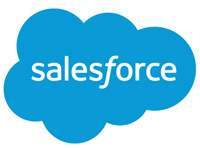
Salesforce continues to grow, albeit a little slower than in prior quarters. At least that’s my reading of a US$4.0 billion quarter that’s 22 percent better than the same quarter a year ago. I am used to seeing growth percentages in the high 20s but I am not concerned about a slowdown.
I don’t know if the spending spree on Tableau and ClickSoftware had anything to do with the numbers. My guess is the financing comes out of a different pocket since the Tableau acquisition alone was equivalent to roughly a year’s worth of revenue. At the same time, Tableau hasn’t had a chance to contribute to the bottom line in any meaningful way, which should provide some amount of optimism for financial analysts.
At this point, Salesforce has a lot of products and it’s been getting involved in major corporations’ digital disruptions, so it takes longer to sell stuff and the deals are way more complicated. All of that — plus the reality that despite a stellar history over the last 20 years, the company doesn’t walk on water — tells me that 22 percent growth at the $4.0 billion level is just fine.
New Way to Do Business
It’s true every year, but right now we should be eagerly anticipating Dreamforce to gain a better understanding of how the many acquisitions of the last few years are going to accelerate the deposition of black ink on the bottom line.
Salesforce always has been a visionary outfit, and the Customer 360 initiative distills a lot into a simple phrase. With all of its analytics, platform and networking capabilities, Salesforce isn’t simply trying to make better applications — it is presenting a different way to do business, which could become something of a standard from here to the middle of this century.
Think about it. Salesforce, along with its competition, it must be said, has been putting a lot of wood behind the arrow of systems of engagement — that is, systems that can anticipate needs and satisfy them.
Salesforce also has been trying, through its philanthropy arm, to change capitalism enough to give it a kinder, gentler face that admits to the need to satisfy all stakeholders.
CEOs understand the importance of corporate engagement and efforts beyond simply making profits for shareholders, a recent declaration by the Business Roundtable, articulated in Harvard Business Review, strongly suggests. In this, like so many other things, it appears that Salesforce has been ahead of the curve.
Engagement, the Secret Sauce
One of Salesforce’s keys to success has been its effort to disrupt the old order by promoting systems of engagement. Systems of engagement move us along a continuum from old style systems of record to anticipatory systems.
Consider the differences between systems that self-diagnose a fault and call for support without human intervention, systems that interface with retail customers, and systems that provide service and support. Finally, consider systems that assist in diagnosing disease and support practitioners who need to formulate treatment plans.
They’re all systems of engagement stemming from the same technology impulse, and they forecast a very interesting future.
That’s just scratching the surface, because there are a lot of other approaches in between. So the acquisitions, at least some of them, are not fully contributing yet to the bottom line. The powerful point here is that development and acquisition aren’t simply adding linearly to growth; one development builds on older ones continuously. That, I think, is the significance of this company’s growth.
Advising Wall Street about the possibility of $16.9 billion for the year is nice, but that likely will look small in 10 years, as systems of engagement continue to disperse into the economy.
My Two Bits
During earnings season we’ve witnessed a lot of good news from the IT vendors, all of which have strategies for supporting the trends in digital disruption with their own disruptive innovations.
I expect we’re in the early phases of forming a true IT utility in which multiple players form an oligopoly.
Some of them, like the social media mavens, face tough scrutiny in the immediate future as society grapples with how to regulate them to achieve the greatest benefit from the least interference.
We’re nearing the point at which CRM might remain the important outpost that it is, but at the same time, platform-driven application development and deployment, which started in CRM, will become the tail wagging the dog.















































Social Media
See all Social Media